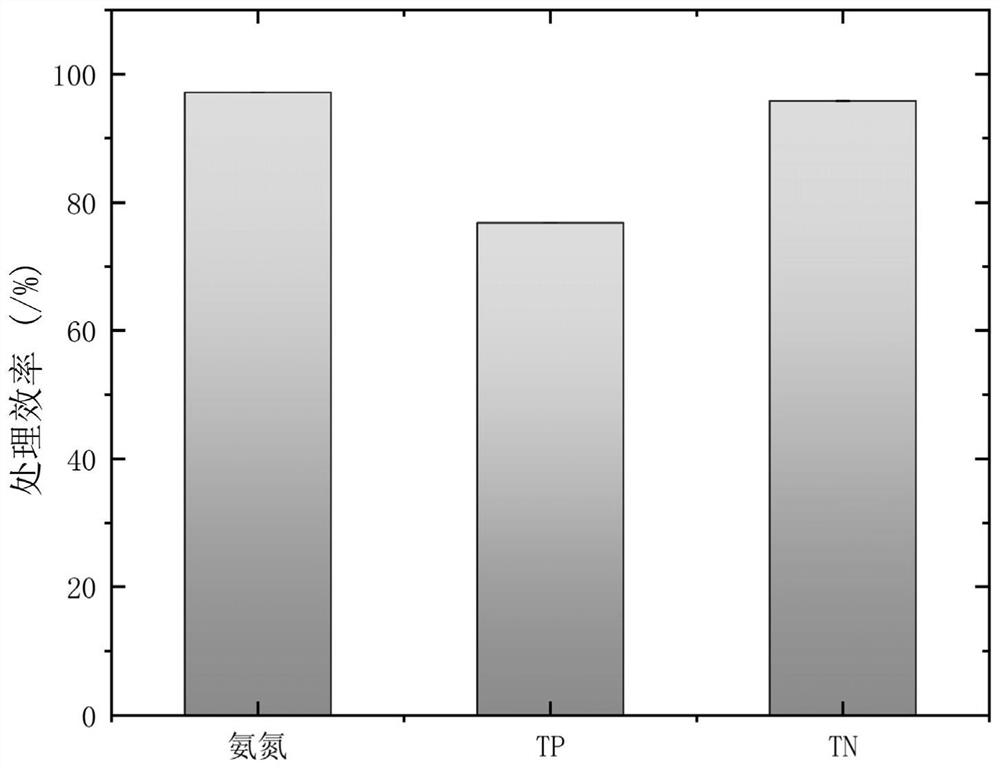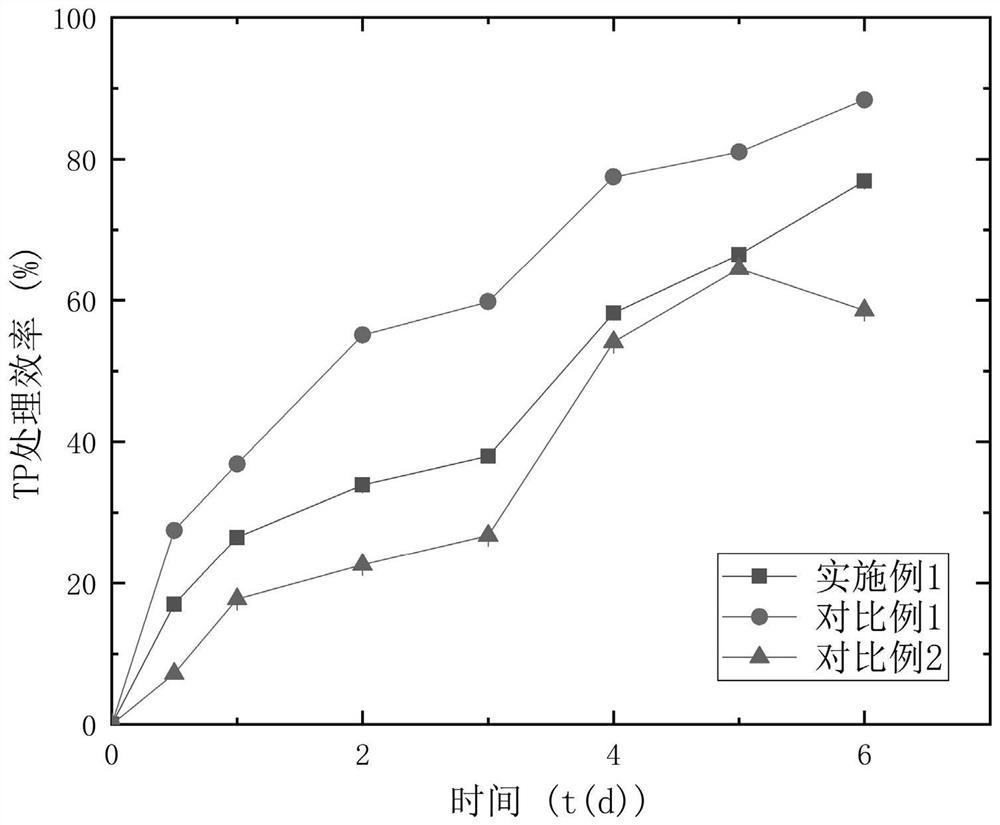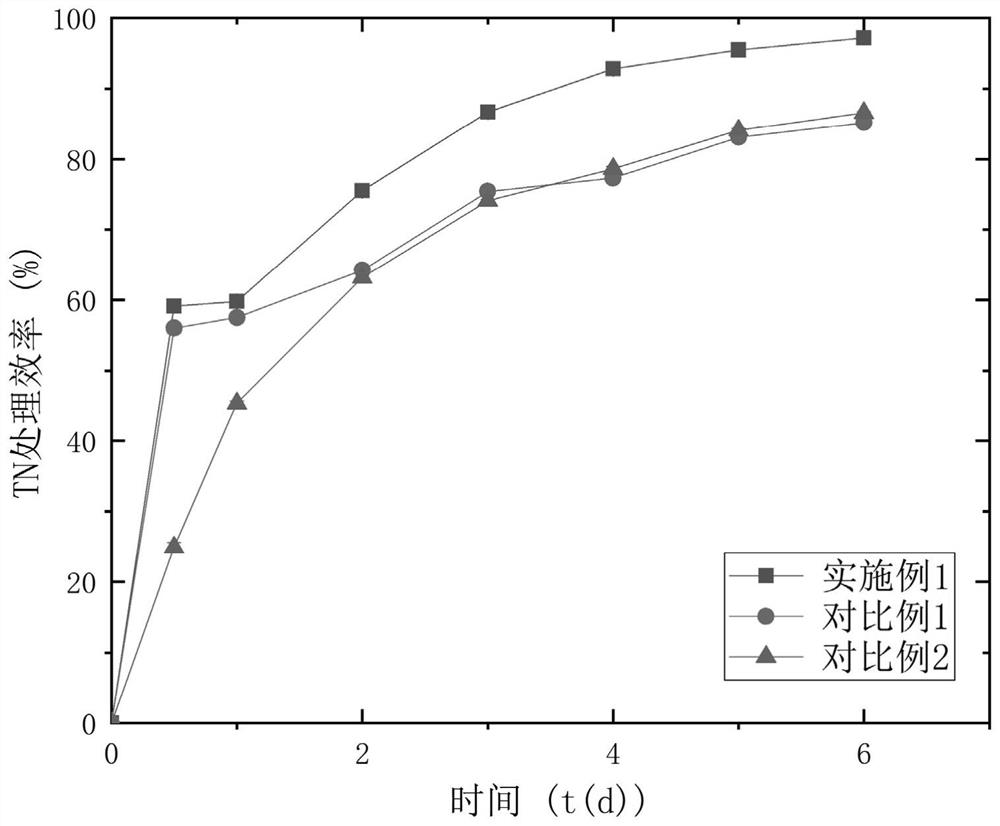Method for treating aquaculture tail water by utilizing immobilized photosynthetic bacteria flora
A technology for photosynthetic bacteria and aquaculture, applied in chemical instruments and methods, biological water/sewage treatment, water/sludge/sewage treatment, etc. Use cost and other issues to achieve the effect of avoiding secondary pollution, preventing leakage, and high use value
- Summary
- Abstract
- Description
- Claims
- Application Information
AI Technical Summary
Problems solved by technology
Method used
Image
Examples
Embodiment 1
[0032] A method utilizing immobilized photosynthetic bacteria flora (chitosan+sodium alginate composite immobilized pellets) to process aquaculture tail water, comprising the following steps:
[0033] Add the spheroid 40g that is fixed with photosynthetic bacterium flora according to the addition amount of the spheroid that is fixed with photosynthetic bacterium flora for every liter of aquaculture tail water, the spheroid that is fixed with photosynthetic bacterium flora and aquaculture tail water (this aquatic product Breeding tail water, the total nitrogen concentration is 3.07mg / L, the total phosphorus concentration is 0.49mg / L, the ammonia nitrogen concentration is 2.471mg / L) mixed, and the light-dark ratio is 12h: 12h (12h under the light condition every day, in the dark Under the conditions of 12h) for 6 days, the treatment of aquaculture tail water is completed, and the pellets with fixed photosynthetic bacteria flora used are based on the chitosan-sodium alginate complex...
Embodiment 2
[0049] Investigate the treatment effect of immobilized photosynthetic bacteria flora under different light conditions, basically the same as embodiment 1, difference only is: be 12h: 12h (12h under light conditions every day, 12h under dark conditions) condition at light-to-dark ratio Under light conditions (i.e. under light conditions for 24h every day) for 5 days, and under dark conditions (i.e. under dark conditions for 24h every day) for 5 days, the results are as follows: Figure 5 shown.
[0050] Figure 5 It is a comparison chart of the treatment effect of immobilized photosynthetic bacteria flora on aquaculture tail water under different light-to-dark ratio conditions in Example 2 of the present invention. Such as Figure 5 As shown, the illumination time is the illumination ratio of 12h:12h to NH 4 + -N, TP and TN have the best removal effects, and their treatment effects are 91.8%, 91.4% and 89.3%, respectively. NH in wastewater 4 + -N degradation process, the...
Embodiment 3
[0052] Investigate the processing effect of immobilized photosynthetic bacteria flora under the condition of different dosages, it is basically the same with embodiment 1, difference only is: according to the addition amount is 20g / L, 30g / L, 40g / L, 50g / L, 60g / L L, 70g / L, be 12h: 12h (every day under light condition 12h, under dark condition 12h) condition processing 5 days at light-dark ratio, the result is as follows Figure 6 shown.
[0053] Figure 6 It is a comparison chart of the treatment effect of different dosages of immobilized photosynthetic bacteria flora on aquaculture tail water in Example 3 of the present invention. Such as Figure 6 As shown, when the dosage is 40g / L, NH 4 + -N, TP and TN have the best removal efficiencies of 92.2%, 92.3% and 89.9%, respectively. When the dosage is in the range of 20-40g / L, the pollutant degradation efficiency increases with the dosage increasing. It may be because with the increase of the immobilized photosynthetic bacteri...
PUM
 Login to View More
Login to View More Abstract
Description
Claims
Application Information
 Login to View More
Login to View More - R&D
- Intellectual Property
- Life Sciences
- Materials
- Tech Scout
- Unparalleled Data Quality
- Higher Quality Content
- 60% Fewer Hallucinations
Browse by: Latest US Patents, China's latest patents, Technical Efficacy Thesaurus, Application Domain, Technology Topic, Popular Technical Reports.
© 2025 PatSnap. All rights reserved.Legal|Privacy policy|Modern Slavery Act Transparency Statement|Sitemap|About US| Contact US: help@patsnap.com



